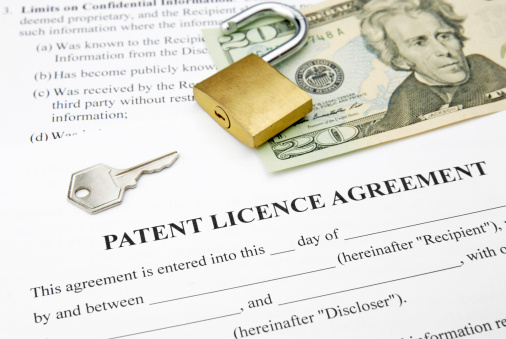Top 3 Prototyping Questions Answered
Posted on Nov 11, 2016 | 0 comments | Connect with Nancy Smith on Google

If you’ve been involved in business in whatever capacity for some time now, then you have most probably noticed that many business owners are now getting their products manufactured overseas, particularly in China. And the most common reason given for the increased preference for sourcing products from China is the considerable amount of savings they enjoy.
Note, however, that you can’t just come up with a seemingly excellent idea and then contact a China-based manufacturer, hoping to make it big in the retail business with the product born out of your idea. Many have gone that route and suffered heartbreaking losses. In order to ensure success, you will have to go beyond coming up with an excellent idea; you will have to satisfy these four requirements:
1. Provide the Chinese manufacturer with industrial drawings, a sample product, or a working prototype.
2. Perform a SWOT analysis of your product and come up with favorable results.
3. Create a business plan backed by proper research.
4. Secure enough capital for the manufacture, shipping, and distribution of your product.
In this article, we will talk about the first requirement—that is, providing a working prototype your China manufacturers can use as a model for mass producing your product. By the end of this article, your most basic questions regarding prototyping China-made products should already have an answer.
What Is a Prototype?
Prototyping involves putting your idea on paper (drawings) and then creating an actual model to see if the idea works. The resulting item (if it does, in fact, work) then becomes the original on which mass production will be based. Some prototypes are nothing but crude mock-ups of the products while others are fully-functioning samples.
Prototyping can affect the manner in which your product is brought into the market. Of course, the ideal is to create a fully-functioning prototype, but that is also the more expensive option, so if you choose to go that route, you’ll have to be prepared to shell out a considerable amount of money. The good news is that if your product is as good as you envision it to be, then the revenue you earn from it should be well worth the initial investment.
When Should a Prototype Be Created?
While creating a prototype is an important step in the business and product sourcing process, it isn’t really something all businesses need to do. For example, if you choose to simply sell products that are already in the market, then all you need to do is find a supplier for those products; there is no need for a prototype. So, how do you know that you need to provide your China-based manufacturer with a prototype? There are generally two instances when a prototype is a must:
1. When licensing for royalties
If the product is your own invention and you want to license it for royalties, it will definitely be a good idea to create a prototype. In this case, though, you don’t have to create a fully-functional sample; a simple rendering of the idea into a concrete product will do. There are even some inventions for which a “virtual prototype”—a computer-generated model that rotates on-screen—serves the purpose of licensing. If your product can easily be rendered in a virtual prototype, then do so; this is by far the most cost-effective prototyping option.

Note that there are instances wherein, after showcasing your invention in a virtual prototype, you will be asked to produce a tangible one. In that case, you’ll have to decide whether to create a simple rendering or a fully-functional model, depending on your budget. In most cases, a simple rendering will suffice, as the people asking for a tangible prototype usually only want to get a better feel for the product’s functions and dimensions.
2. When you plan to sell your own invention
If your objective doesn’t stop at simply licensing your invention for royalties and you also want to manufacture and sell it yourself, then you most definitely need to create a prototype. This is true whether you choose to get the product manufactured locally or overseas. The manufacturing process cannot begin unless you know exactly whether the product will work and how it works. Besides, what will the manufacturing plant use as a product model if there is no sample or prototype? Wondering how prototyping(typically CNC prototyping) works? Check this video here.
As regards choosing a manufacturing plant to mass produce the product for you, there are generally two options: doing business with a local manufacturer or sourcing the product from an overseas location. China has become quite a popular sourcing destination in recent years, and you may want to look into the possibility of getting your product manufactured there.
Can Someone Else Create the Prototype?
Of course, the ideal would be to create the prototype yourself if you have an idea for a potentially profitable product. After all, the idea is yours, so you’re the one who knows exactly how it should work and what it should look like. But creating a prototype cannot always be done by the person who had the idea for the product.
Maybe you aren’t the DIY type and you don’t know that first thing about creating actual products. You’re simply “the idea guy,” in which case you will need help from those who have the necessary skills and experience in creating tangible items out of ideas. This means you may need to hire someone to create a prototype for you.
The good news is that there are many design firms out there that can create the perfect prototype for you. The not-so-good news is that there are so many companies out there that offer prototyping services, you may find it a bit challenging to find the right one. The bad news is that this is another expense you’ll have to take care of before you can get your business off the ground.
But, hey, starting a business entails investment, right? And you’ll have to invest time, money, and effort if you really want to succeed. For sure, you won’t regret making the investment once you begin enjoying the returns. The key is not to rush and to go about every step of the process in the right way. Here are the three basic options you can choose from when deciding whom to hire for prototyping:
1. An established manufacturer
An established firm, especially one that specializes in the kind of product you have in mind, will certainly have the right skills and experience for the job. If you choose to get one to create your prototype, you are assured of the item’s quality. Note, however, that if you only plan to manufacture your product on a small scale to begin with, you may want to avoid contacting large firms for prototyping. They likely have large operations in place and aren’t likely to prioritize your order.
It may be a better idea for you to hire a medium-sized factory that’s looking for an opportunity to increase revenue. It may also be a good idea to look for a factory in the developing world (China would be a good place to look), as they may be more prepared to prioritize the business you bring and appreciate the opportunities you present.
2. A protoshop
Protoshops typically have people on their team with skills in creating specific types of product. These shops specialize in creating prototypes, so they definitely have the kind of experience you’re looking for. Their specialization, however, (and the fact that they only create prototypes and you’ll have to look for a different manufacturer for mass production) generally means this could be the most expensive option. And again, a good way to reduce cost if you choose this route is to look for a China-based shop.
3. A techo
There are individuals who are technically skilled and occasionally create prototypes for would-be entrepreneurs either as a profitable hobby or a side-job. Some of these individuals don’t ask for a partnership in lieu of payment for the prototype. This is generally the least expensive and most flexible option, but it also entails the highest risk, since techos aren’t as established as manufacturing firms and may take more time to complete the prototype.
These are just three of the most common questions asked by newbie entrepreneurs as regards prototyping. But once you get the answers to these questions, you should be in the right position to decide whether to create a prototype and how to go about it.
Now that you know what a prototype is and what specific circumstances require the creation of one, you should be able to make an informed decision as to whether a prototype for your product is needed or if a simple description and drawing will do. You should also be in a much better position to decide whether to hire a techo, a protoshop, or an established manufacturer for prototyping.
Whatever you choose to do where prototyping is concerned, one thing you’d do well to bear in mind is that there is a world of opportunity awaiting you in developing countries like China.
